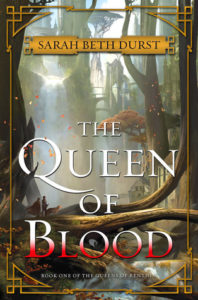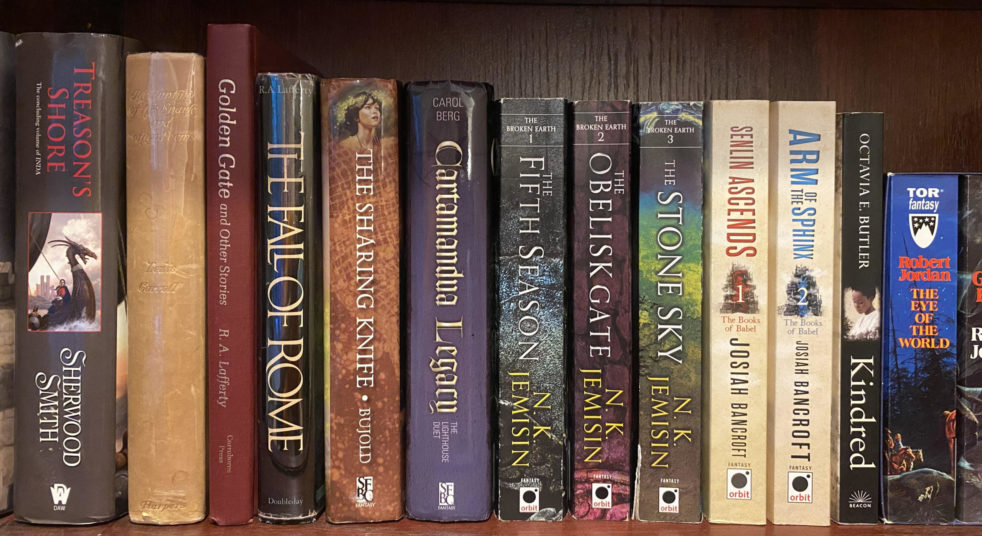
There are quite a few books that I’ve picked up just because they seemed perfect for a Bingo square, but I’ve rarely had to look as hard as I did to find The Queen of Blood. The hard mode Forest Setting square requires the entirety of the book to take place within a forest, and after reading a pair of books starring forest deities that still didn’t fit, I’d begin to lose hope. But, as it turns out, Sarah Beth Durst’s tale of a girl trying to protect her suspended home from malign elemental spirits was the perfect fit. So up the list it went.
The Queen of Blood, as mentioned, takes place entirely within a vast forest, with villages and even cities built into the trees themselves, grown into the living wood by chaotic spirits brought to heel by the few women with the appropriate affinity. But sometimes that control fails. And when Daleina finds herself with the affinity, however weak, she takes it upon herself to undergo any training she must to ensure the spirits are kept at bay and her family and those like them kept safe.
In many ways, The Queen of Blood follows the expected tropes of young adult fantasy, although it’s willing to go much darker than average—similar to Naomi Novik’s Scholomance books. While it eschews the love triangle, it introduces a host of archetypal characters sorely lacking in depth. There’s the monarch who will sacrifice others to stay in power, the teacher who must be tough to prepare her students for what’s to come, a bevy of anonymous school friends, and most egregiously, a power-hungry frenemy who seems to exist only to provide a foil for the lead and perhaps to set up a nebulous future conflict. While the two main perspective characters get more depth, even they hew closely to archetypes: the grizzled mentor recovering from personal tragedy and the noble-hearted lead who must use her heart and mind to defeat more powerful rivals.
But a trope is only as stale as its uninspired deployment, and while some of the side characters may frustrate, and while significant chunks of plot may be predictable, Durst has plenty of life to breathe into the story. The backdrop is exquisite, with breathtaking settings in the suspended settlements and a symbiosis between nature and spirit that emphatically closes the door on defending against hostile spirits by simply eliminating them. And the compelling and free-flowing prose style makes it hard not to get sucked into the story.
Of course, a lot of your enjoyment will depend on how much you like watching a clever and peaceful character try to find ways to achieve resolution in scenarios where there is simply no peaceful solution. Personally, I love that sort of story, and so the main thrust of The Queen of Blood worked well for me. And, while a few plot elements may have been predictable, and a few details might not have totally landed, Durst still pulled off a couple major surprises along the way, walking a tightrope in which neither purely violent nor purely peaceful solutions became realistic options and ensuring that closing never felt like just playing out the string.
The weakness of the secondary characters may be a significant mark against The Queen of Blood, but everything else made it well worth reading anyway, with a wonderful setting, an excellent lead, and a plot that closes off the simple solutions and keeps the tension high to the end.
Recommended if you like: coming-of-age stories, leads with brains and heart, forest spirits who want to kill you.
Can I use it for Bingo? Forest Setting hard mode! It’s also a Book Club book and can probably make an argument for Found Family.
Overall rating: 15 of Tar Vol’s 20. Four stars on Goodreads.
